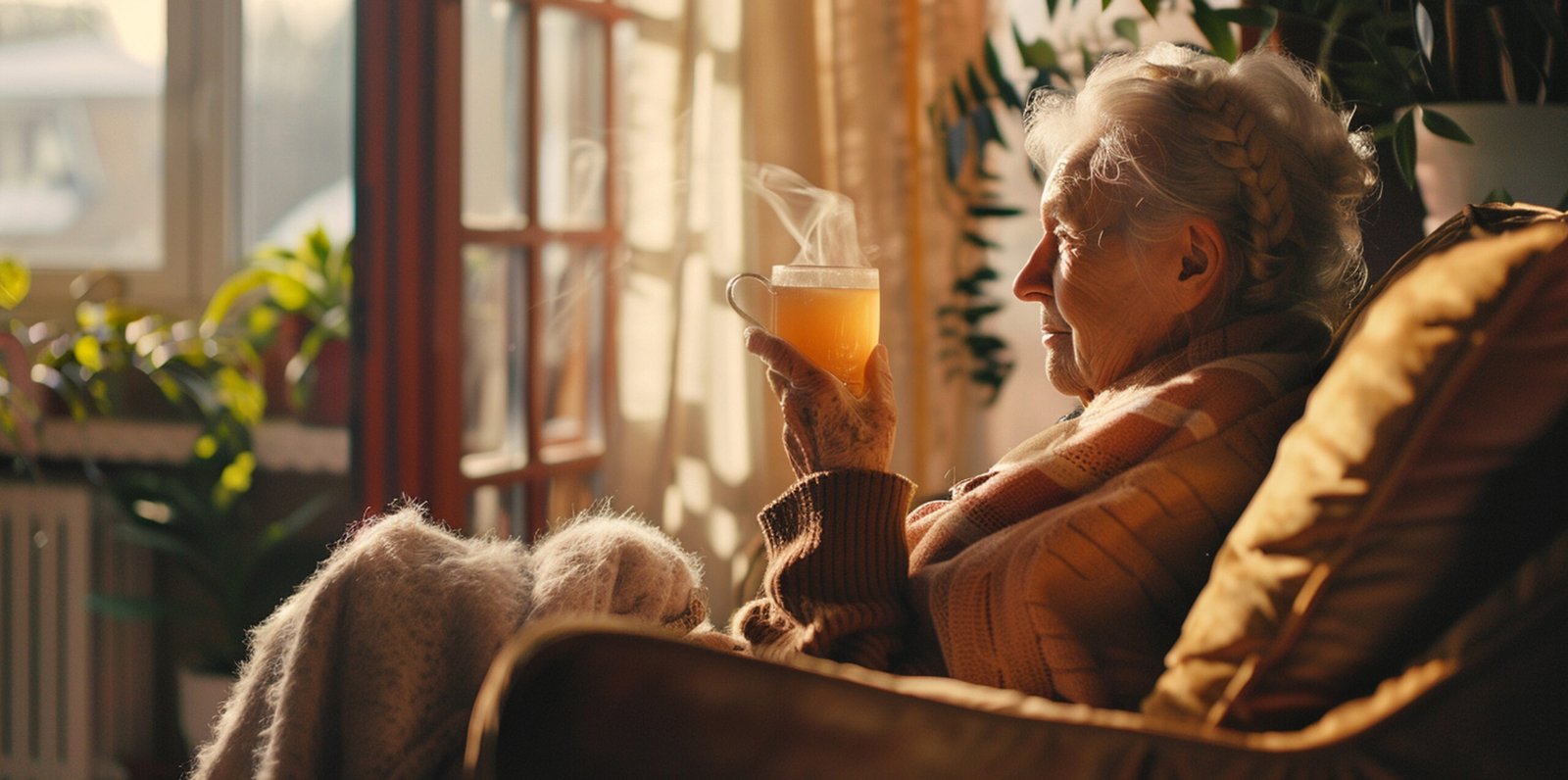Imagine this: You’ve lived in your home for years. It’s where your memories are made, where you’ve celebrated birthdays, holidays, and everything in between. But now, as the years go by, things start to change. Maybe you notice that bending down to pick something up is harder, or that the stairs are starting to feel a little more treacherous. Or maybe you’re worried about an aging loved one who insists on staying independent but could use a little extra help navigating their surroundings.
You’re not alone. More and more seniors are choosing to “age in place”—that is, stay in their homes instead of moving to assisted living. And why not? Home is where the heart is, and it’s comforting to have familiar surroundings as you get older. But in order to make aging in place a reality, certain safety modifications are necessary to ensure comfort, independence, and, most importantly, peace of mind.
Why Senior-Friendly Home Modifications Matter
You may be thinking, “But I’ve lived here for years, and I’ve never had a problem. Why change anything now?” That’s a valid question. The truth is, many common household accidents—like falls—become more of a risk as we age. According to the CDC, falls are the leading cause of both fatal and non-fatal injuries for seniors. Even minor hazards in your home that you may not notice can become serious dangers.
That’s why it’s essential to make your home as safe as possible. Fortunately, making your home senior-friendly doesn’t require a major overhaul. With some simple, practical upgrades, you can create a space that’s safer, more accessible, and better suited to your or your loved one’s needs.
So, how do you make your home senior-friendly? Let’s walk through the top safety tips to help you get started.
1. Start with the Bathroom: Prevent Slips and Falls
The bathroom is one of the most dangerous areas in the home for seniors. Wet floors, slippery tubs, and narrow spaces can create significant risks. But with a few simple modifications, you can transform your bathroom into a safer environment.
- Install grab bars: These sturdy bars provide extra support when getting in and out of the shower or bath, and they can prevent slips. If you don’t have any, check out these grab bars on Amazon.
- Non-slip mats or strips: Place these in the tub or shower, as well as on the bathroom floor. They can help prevent dangerous falls on wet surfaces. You can find a nice variety here on Amazon.
- Walk-in shower: If possible, replace a traditional bathtub with a walk-in shower that eliminates the need to step over a high tub edge. You can check out a variety of options here on Amazon.
- Shower chair: Consider adding a waterproof chair or bench in the shower so that you can sit while bathing, reducing the risk of fatigue and instability. You can find a bunch of options here on Amazon.
Objection: “But I don’t want my bathroom to look like a hospital room.”
Totally understandable! Modern grab bars and walk-in showers come in stylish, sleek designs that blend seamlessly into your bathroom. No need for clunky equipment or a sterile feel—just functional upgrades that look good and keep you safe.
2. Eliminate Tripping Hazards: Clear the Path
One of the easiest ways to prevent accidents is by removing common tripping hazards. As we age, our balance can become less steady, making something as simple as an area rug or clutter a potential danger.
- Secure rugs: If you have rugs, make sure they’re non-slip or use rug pads underneath to prevent them from shifting. You can find a bunch of options here on Amazon.
- Keep walkways clear: Ensure that hallways and rooms are free from clutter like books, shoes, or electrical cords. Consider installing cord covers if wires are unavoidable.
- Even flooring: If you have uneven or damaged floors, it’s time to repair them. Uneven surfaces can be dangerous, especially if you’re using a cane, walker, or wheelchair.
Objection: “But I like the look of my rugs and furniture!”
We get it—the aesthetics matter! But you don’t have to sacrifice style for safety. Look for slip-resistant rugs that match your décor or invest in stylish furniture that doesn’t crowd walkways. The key is to make sure that the space remains both functional and beautiful.
3. Improve Lighting: See and Be Seen
Good lighting is often overlooked, but it’s essential for seniors. As eyesight naturally declines with age, dimly lit spaces can make it harder to navigate and increase the risk of trips and falls.
- Increase lighting: Add brighter bulbs in dim areas, especially in hallways, stairways, and bathrooms.
- Motion-sensor lights: Install these in key areas, like stairways or hallways, so that lights automatically turn on when you approach them. You can find a nice selection of motion-sensor lights here on Amazon.
- Nightlights: Place nightlights along common paths, particularly near bathrooms and staircases, to prevent disorientation in the dark. You can find a great selection of night lights here on Amazon.
Objection: “I don’t want to deal with high electric bills.”
Don’t worry! There are plenty of energy-efficient LED bulbs and motion-sensor lights available that use minimal energy while providing maximum safety. Small changes can make a big difference without breaking the bank.
4. Make Stairs Safer: Install Supports and Avoid Hazards
Stairways can be especially challenging as we age. The risk of a fall increases with each step, but a few simple upgrades can make them much safer.
- Handrails on both sides: Install sturdy handrails on both sides of the stairs to provide extra support and balance.
- Tread strips or non-slip paint: Apply non-slip strips to each stair or use non-slip paint for additional traction.
- Clear clutter: Keep stairs clear of items like shoes or books to avoid tripping hazards.
Objection: “I don’t want to spend a lot on major renovations.”
Good news! Many of these modifications are relatively inexpensive and can be done in a weekend. Adding a second handrail, for example, can be a simple and affordable way to drastically increase safety.
5. Consider Smart Technology: Use Technology to Stay Safe
Technology has come a long way in helping seniors maintain independence while staying safe. From medical alert systems to smart home devices, the possibilities are endless.
- Medical alert systems: Consider investing in a medical alert system that allows you to easily call for help in an emergency, whether at home or away. Check out this article titled Best Medical Alert Systems of 2024 posted by the NCOA (National Council on Aging).
- Voice-controlled devices: Smart home assistants (like Alexa or Google Home) can help seniors control lights, appliances, and even security systems just by using voice commands.
- Security cameras and alarms: Consider installing cameras and smart doorbells to monitor who’s at the door or ensure the home is secure, especially for seniors living alone.
Objection: “I’m not tech-savvy, and I don’t want to deal with complicated devices.”
It’s true—technology can sometimes be intimidating. But many smart devices are user-friendly and intuitive. Plus, many come with customer support to guide you through setup and troubleshooting. You don’t have to be a tech expert to enjoy the benefits of home automation!
6. Create a More Accessible Kitchen: Prevent Injury
The kitchen is another space that can pose dangers, especially with the use of sharp objects, hot surfaces, and heavy pots. Making a few adjustments here can reduce the risk of burns, cuts, and other injuries.
- Lower frequently used items: Store frequently used items like dishes, cups, and utensils in lower cabinets to reduce the need for bending or reaching.
- Non-slip mats: Place non-slip mats near the sink or stove to prevent slipping on wet surfaces.
- Microwave over oven: If possible, place the microwave at eye level to avoid reaching into a hot oven.
Objection: “But my kitchen is small, and there’s not much room for change.”
You don’t need a massive overhaul. Focus on small, practical changes like reorganizing cabinets or adding non-slip mats. Sometimes the smallest adjustments can make the biggest difference.
7. Embrace a Little Help from Family and Caregivers
Finally, don’t hesitate to ask for help. Whether it’s hiring a caregiver or having family members assist with heavier tasks, ensuring that help is available when needed is an important part of aging in place safely.
Objection: “I don’t want to burden my family.”
It’s understandable to want to stay independent. But remember, the people who care about you want to help. Making sure your home is safe and accessible for everyone benefits you—and them.
Final Thoughts
Making your home senior-friendly doesn’t have to mean a huge expense or major renovation. With a few simple, thoughtful changes, you can create a safer, more comfortable environment that will allow you to maintain your independence and enjoy the comfort of your home for many years to come. Whether it’s upgrading your bathroom, improving your lighting, or installing handrails, every little step you take adds up to a safer and more secure living space.
So, what are you waiting for? Start making small changes today to ensure a safer, happier tomorrow. Your future self (or loved one) will thank you.







